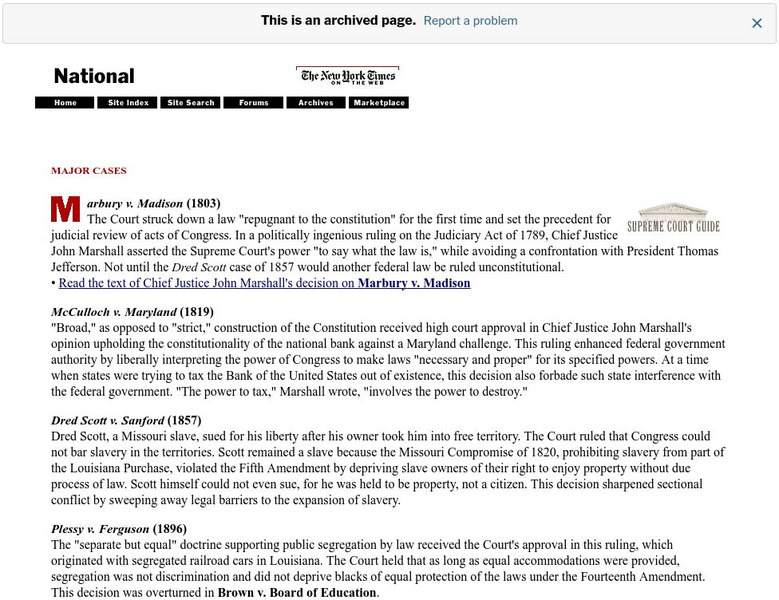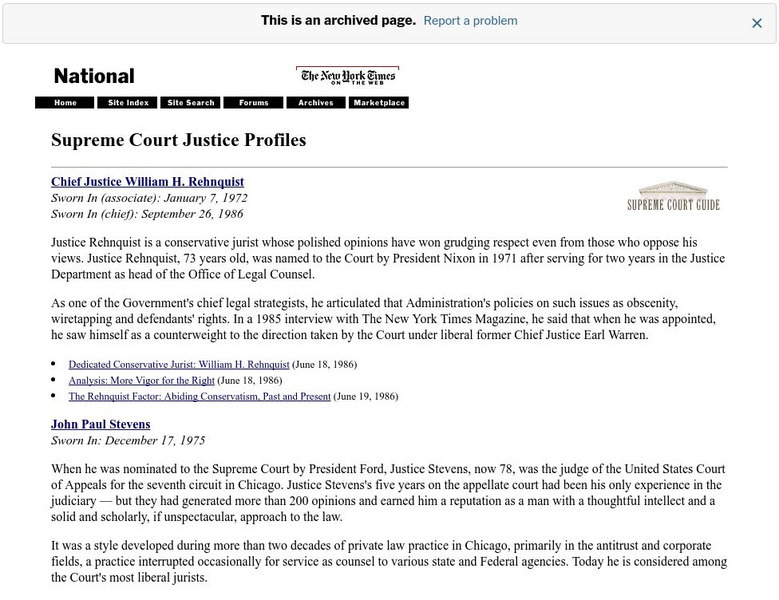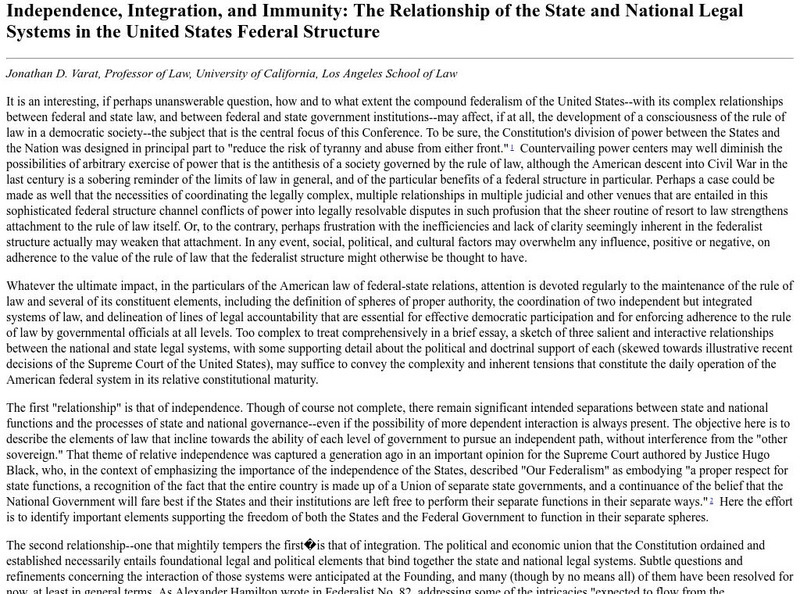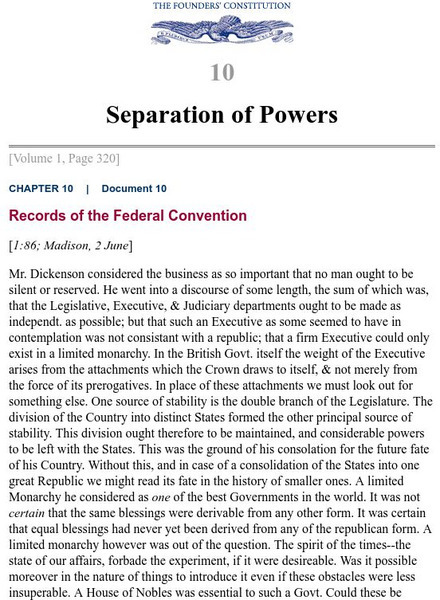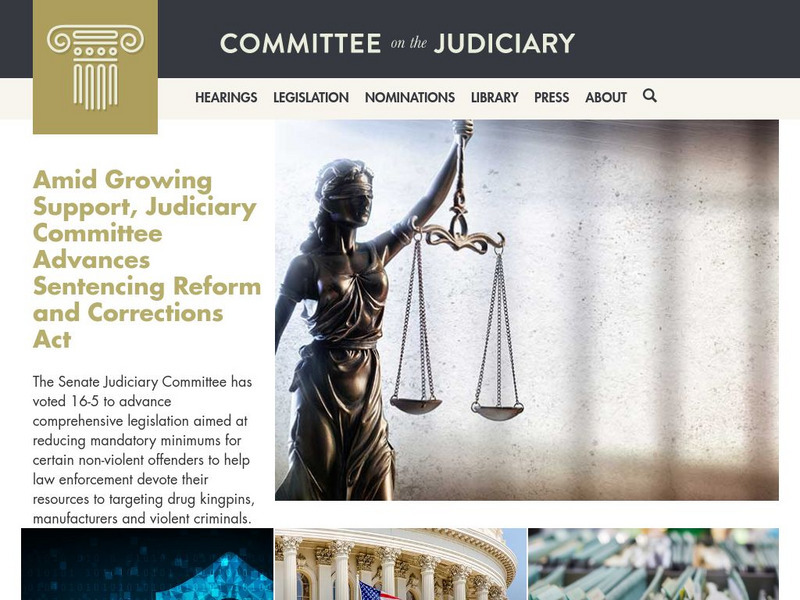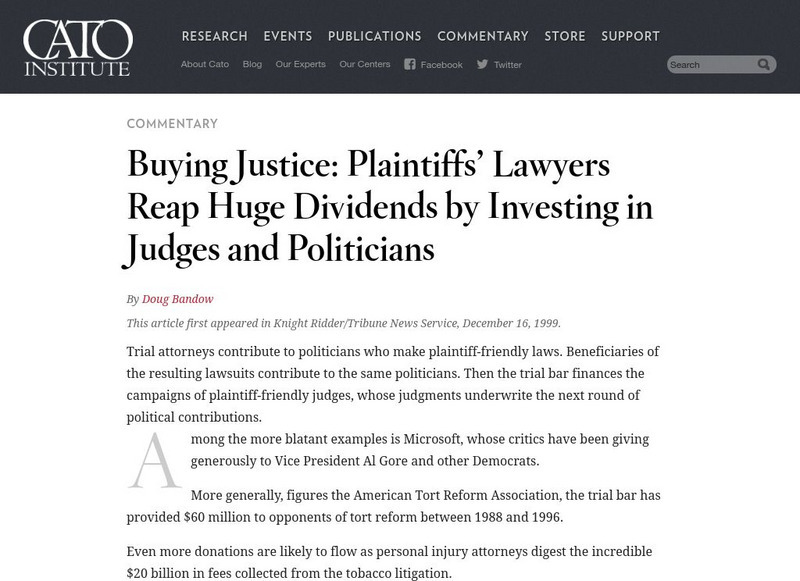Curated OER
The Role of the Judiciary in a System of Separation of Powers and Checks and Balances
Students determine the difference between the different branches of government and assess the role of each within the American governmental system.
Curated OER
Voters and Judges
Students analyze the work on independent judiciaries. In this federal courts lesson, students listen to their instructor lecture on details of federal cases. Students respond to discussion questions and participate in an activity...
Curated OER
The Institutions of Government: The Judiciary
Young scholars explain the difference between tribal, state and federal sovereignty. Using the internet, they read Supreme Court cases that focus on Native American law. They compare and contrast the view of the case from the Native...
Curated OER
The Judiciary in American History
Young scholars investigate the influence of political and societal forces on judicial decisions. Among the topics they examine are the selection of judges and the cause and effect relationship between politics, society, and the law. to...
Curated OER
Utah's Judicial Branch
Seventh graders explain that the judicial branch of Utah's government interprets laws and reviews the consitutionality of laws.
Other
Certiorari Practice: The Supreme Court's Shrinking Docket
Recent legislation has allowed the Supreme Court discretionary, rather than obligatory powers, in deciding which cases to decide. This in-depth and well-developed essay describes the process and criticizes the new system, while providing...
PBS
Pbs: How the Supreme Court Affects the Lives of Teens (Lesson Plan)
Objectives for this lesson include describing the structure and function of the Supreme Court, looking at important decisions, and discussing recent rulings and issues.
New York Times
New York Times: Supreme Court Landmark Cases
This site lists, with brief descriptions, major landmark decisions that have been made by the Supreme Court. Links to actual cases as well.
New York Times
New York Times: Supreme Court Justice Profiles
This New York Times site contains biographies of every US Supreme Court Chief Justice including early life, famous decisions, and opinions.
Teaching American History
Teaching American History: Fireside Chat: Plan for Reorganization of Judiciary
Franklin D. Roosevelt introduces a movement to reorganize the judiciary system of the United States during his March 9, 1937 Fireside Chat. He proposes to change the number of judges and the terms of their services to best uphold the...
Cornell University
Cornell University: Law School: Jurisdiction Explained
Site provides an overview of jurisdiction with links to recent case law and constitutional references.
Other
The Federalist Papers:convention, Constitution,& Debates
A clickable index of the 85 Federalist Papers. The text of each letter (paper) sent to New York newspapers in 1787 and 1788 is easily accessed.
Scholastic
Scholastic: Who Shall Judge?
Well-written description of the process, qualifications, and constitutional background on selecting Supreme Court justices.
Center For Civic Education
Center for Civic Education: Relationship of State and National Legal Systems
This lengthy essay describes the balance between state and federal judiciary courts and touches on independence, integration, power limits and immunities.
University of Chicago
The Founders' Constitution: Separation of Powers
Federal Convention on the Separation of Powers as recorded during debate at the convention, June 2, 1787.
Other
Unt: Deciding to Decide, the Law and Politics Book Review
This informative review of "Deciding to Decide: Agenda Setting in the United States Supreme Court" by H.W. Perry, Jr. describes the process of Supreme Court case selection.
Other
Fundamentals of Judicial Philosophy: Activism
This short article discusses judicial restraint versus judicial activism, with constitutional and case study references.
Travel Document Systems
Tds: Cameroon: Government
A brief look at the set-up of the government in Cameroon and a detailed discussion of the current state of affairs and the many current political problems in this country. Information is from the U.S. State Dept. Background Notes.
US Senate
Committee on the Judiciary
The Committee on the Judiciary has been called the lawyer for the House of Representatives because of its jurisdiction over matters relating to the administration of justice in Federal courts, administrative bodies, and law enforcement...
Cato Institute
Buying Justice: Plaintiffs' Lawyers Reap Huge Dividends
This writer discusses the buying of justices' impartiality by trial lawyers and calls for tort reform.
Scholastic
Scholastic: Role of the Supreme Court
This essay describes the power of the Supreme Court to 'check' the actions of both the President and Congress, with some historic documentation.
Other
Litigator's Internet Resource Guide: The Rules of Court
A database of the rules, forms, and dockets for both the state and federal court systems.









